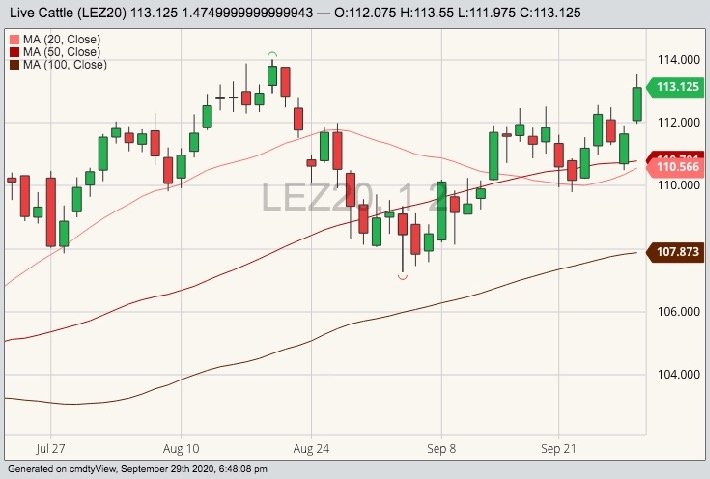Chicago | Reuters — U.S. live cattle futures rose on Tuesday, with the December contract reaching its highest in a month on signs of strong demand for beef and expectations of firm cash cattle trade this week, analysts said.
Also, commodity funds appeared to be adjusting positions ahead of the end of the month and quarter.
“It’s the second-to-last day of the month. I think a lot of funds are dressing up their long positions,” said Jeff French, analyst with Top Third Ag Marketing.
Read Also

U.S. grains: Wheat futures rise on supply snags in top-exporter Russia
U.S. wheat futures closed higher on Thursday on concerns over the limited availability of supplies for export in Russia, analysts said.
Chicago Mercantile Exchange October live cattle settled up 0.95 cent at 108.9 cents/lb., and most-active December ended up 1.475 cents at 113.125 cents after reaching 113.55, its highest since Aug. 20 (all figures US$).
CME November feeder cattle finished 2.675 cents higher at 143.775 cents/lb.
Packer margins narrowed since Monday but were still robust at around $300 per head, a factor that helped fuel expectations that meat packers might pay feedlots more for market-ready cattle than they did last week.
“There was kind of a consensus that demand for beef is really good, surprisingly good, and that may embolden the feedlots to wait for better money,” said Dan Norcini, an independent livestock trader.
Seasonally, demand for beef tends to pick up in October after a lull in September, French noted.
Wholesale boxed beef prices were mixed on Tuesday, with choice cuts dropping 56 cents to $217.16/cwt, while select cuts rose 57 cents, to $206.99/cwt, the U.S. Department of Agriculture said.
CME lean hog futures closed lower on profit-taking after strong advances this month and worries about ample U.S. hog supplies, analysts said.
CME October lean hog futures settled down 0.325 cent at 72.375 cents/lb. while the most-active December contract tumbled 2.05 cents to end at 61.975 cents.
Traders noted that the December hog contract was trading at a historically wide discount of more than 10 cents to the October contract.
“That essentially tells you these guys think there is going to be a massive wall of hogs coming to the market,” Norcini said.
— Julie Ingwersen is a Reuters commodities correspondent in Chicago.















